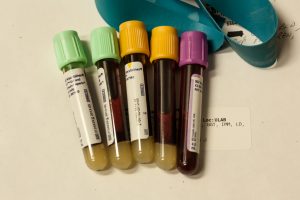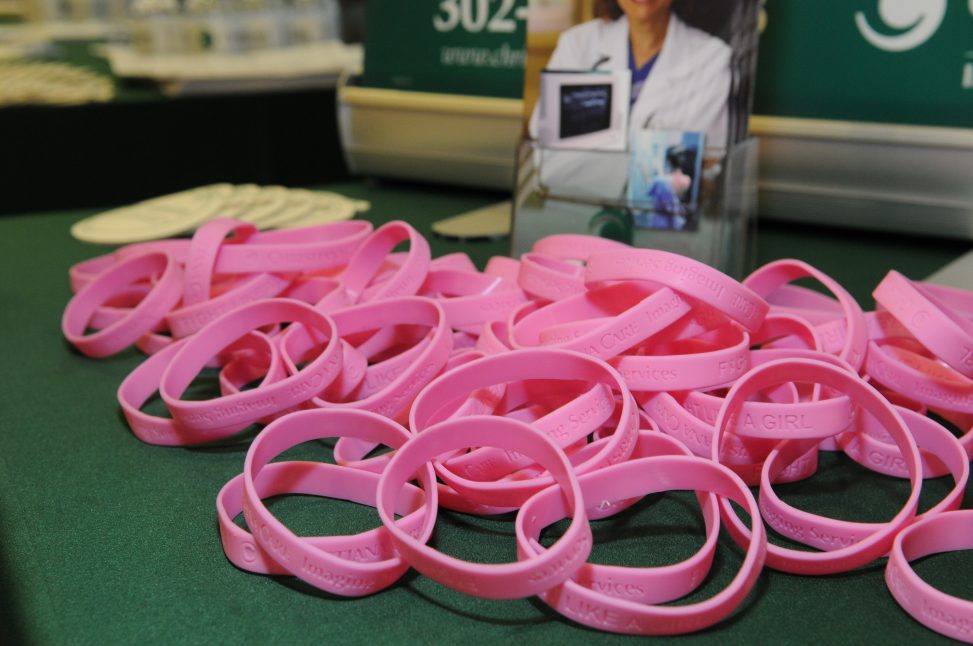BRCA1 and BRCA2 have a significant meaning in the world of cancer. Chances are if you or anyone you know has had breast or ovarian cancer, you have come across the BRCA genes. What a lot of people are not aware of is that these are only a small piece of the giant puzzle of breast and ovarian cancer. Over the past few years, cancer researchers have discovered a multitude of different genes that are linked to hereditary breast and/or ovarian cancer (HBOC). Many genetic panels have been developed to test cancer patients and family members for these genes; most of them consisting of about 20-40 genes like the one I have linked to this article. Even with the strides being made in the field of cancer diagnostic testing, there are still so many patients who do not have a genetic diagnosis of their cancer, but they are still presumed to have some sort of genetic link to their cancer that just hasn’t been detected by the current DNA testing methods.

Photo received from Flickr
Now, why is this important? Knowing the molecular basis of an individual’s cancer provides doctors with important information as to how to proceed with the patient’s treatment. There are certain mutations that have led to the development of specific drugs proven to work in destroying the cancer cells created by them. Pretty much every cancer one may encounter is just a little bit different, so knowing what caused it and what specific gene it came from is extremely helpful when considering treatment options. It really is the difference between life and death for some patients. This is why finding new ways to test for these mutations is a pressing goal for cancer researchers everywhere.
In a pilot study recently published by the American Association for Cancer Research, clinicians from 18 medical centers across the US collaborated to try a new approach to HBOC testing. They combined the known DNA testing method with an analysis of RNA to try to increase the diagnostic capability of these screenings. RNA is the material that carries the “message” of DNA to produce the proteins needed to carry out functions in the body. 746 breast cancer patients were tested in this study, and the results were promising.
The variant detection rate for sixteen HBOC genes was increased from 8% to 9%.
That may not seem like a huge improvement, but when people’s lives are at stake, a 1% increase is a pretty big deal!
Another goal of this study was to decrease the number of variants of unknown significance (VUS) which are versions of genes that are not normal but are not known to cause any specific changes that lead to cancer either. Overall, the study was able to decrease VUS by 3% by finding two different variants of the BRCA1 gene, reclassifying three genes to be likely pathogenic or disease causing, and reclassifying two more genes to be likely benign or not harmful. Because of this, there were 31 patients who had their results reclassified, and 5 of those patients received diagnoses that previously would have been classified as inconclusive or negative results. The method of using DNA and RNA genetic testing has proven that it has the capability to drastically increase the diagnostic capability of HBOC testing which will make an incredible difference in the lives of many patients and their families.
LaDuca, H., Hoang, L., Dolinsky, J., et al (2020). Concurrent DNA and RNA genetic testing identifies more patients with hereditary breast cancer than DNA testing alone. American Association for Cancer Research. Volume 80, Issue 4 Supplement, pp. P6-08-08. https://doi.org/10.1158/1538-7445.SABCS19-P6-08-08

Alex
"This title was very eye catching! That is so interesting that such a ..."
Alex
"This is really interesting! The fact that crops and plants are damaged is ..."
Alex
"Well done, this article is great and the information is very captivating! Ethics ..."
Alex
"I was intrigued throughout the whole article! This is such an interesting topic, ..."
Alex
"This is such an interesting article, and very relevant!! Great job at explaining ..."
Grandpa
"Honey You Did a good job I will forward to my eye doctor "
murphymv
"This article is fascinating because it delves into the details of the research ..."
murphymv
"I agree, adding the photo helped solidify the main finding. "
murphymv
"This is a fascinating finding. I hope this innovative approach to improving transplants ..."
Sherzilla
"This is a great article! I would really love to hear how exactly ..."
Sherzilla
"It's disappointment that these treatments were not very effective but hopefully other researchers ..."
Sherzilla
"I agree with your idea that we need to shift our focus to ..."
Sherzilla
"It's amazing to see how such an everyday household product such as ..."
Lauren Kageler
"I will be interested to see what the data looks like from the ..."
Lauren Kageler
"A very interesting article that emphasizes one of the many benefits that the ..."
maricha
"Great post! I had known about the plight of Little Browns, but I ..."
Sherzilla
"I assumed cancer patients were more at risk to the virus but I ..."
Sherzilla
"Great article! It sheds light on a topic that everyone is curious about. ..."
maricha
"This article is full of really important and relevant information! I really liked ..."
maricha
"Definitely a very newsworthy article! Nice job explaining the structure of the virus ..."
maricha
"It's interesting to think that humans aren't only species dealing with the global ..."
murphymv
"This is very interesting and well explained. I am not too familiar with ..."
Lauren Kageler
"Great article! This post is sure to be a useful resource for any ..."
Lauren Kageler
"Definitely seems like an odd pairing at first, but any step forward in ..."
murphymv
"What an interesting article! As you say, height and dementia seem unrelated at ..."
murphymv
"Great article! I learned several new methods of wildlife tracking. This seems like ..."
murphymv
"Very interesting topic! You explained cascade testing and its importance very well. I ..."
Alex
"This article is really interesting! What got me hooked right away was the ..."
Sabrina
"I found this article super interesting! It’s crazy how everyday products can cause ..."
Erin Heeschen
"I love the layout of this article; it's very eyecatching! The advancements of prosthetics ..."
murphymv
"Awesome article! I like the personality in the writing. Flash Graphene not only ..."
murphymv
"Very interesting work! I don't know a whole lot about genetics, but this ..."
Cami Meckley
"I think the idea of using virtual reality technology to better help prepare ..."
Erin Heeschen
"I wonder if there's a connection between tourist season and wildfires in the ..."
Ralph berezan
"Not bad Good work "
Michelle
"This sounds like it would be a great tool for medical students! ..."